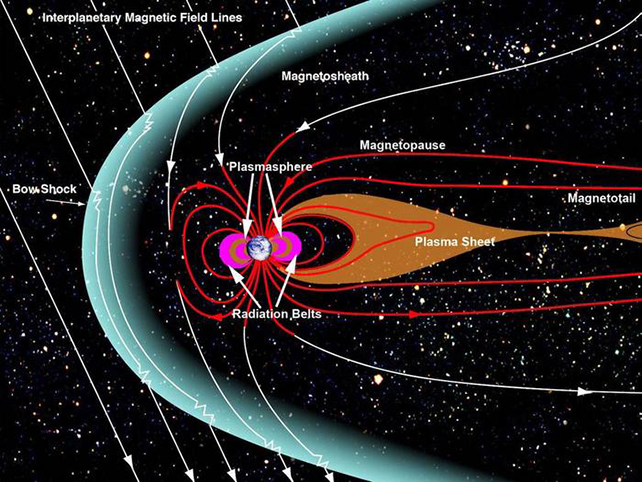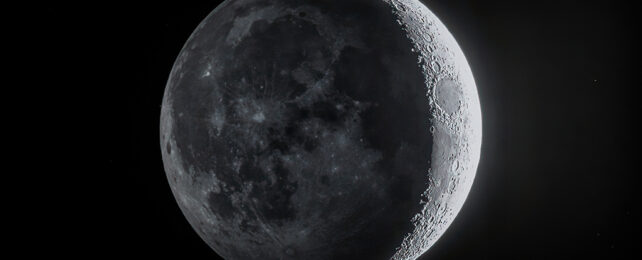We know there's ice on the Moon – what's less clear is where it came from. A new study suggests that waves of electrons, arriving indirectly from Earth and the Sun, are contributing to the formation of frozen water on the lunar surface.
These electrons hit the Moon as it passes in and out of Earth's magnetotail, which our planet leaves behind as it rushes through space.
Within the magnetotail is a plasma sheet made up of highly charged electrons and ions, pulled from Earth's atmosphere and solar wind radiation from the Sun.
Scientists have previously looked at the role the magnetotail and the larger magnetosphere might play in lunar water formation. The magnetosphere is created as Earth's protective magnetic field rebuffs the Sun's solar wind, creating a variety of effects in its wake.

"This provides a natural laboratory for studying the formation processes of lunar surface water," says planetary scientist Shuai Li from the University of Hawai'i at Mānoa.
"When the Moon is outside of the magnetotail, the lunar surface is bombarded with solar wind. Inside the magnetotail, there are almost no solar wind protons and water formation was expected to drop to nearly zero."
However, remote analysis suggests this isn't the case. Earlier studies pointed to hydrogen ions from solar winds generating water on the Moon, but it seems this water is still forming when the lunar surface is protected from solar winds, inside the magnetotail.
Other forces are at play, the researchers think – specifically, electrons. One of the ways this might happen is high-energy electrons reacting with the lunar soil, releasing trapped hydrogen that can then form water.
"In the magnetotail, there may be additional formation processes or new sources of water not directly associated with the implantation of solar wind protons," says Li. "In particular, radiation by high energy electrons exhibits similar effects as the solar wind protons."
Further observations and experiments on the lunar surface are going to be needed to find out for sure, but it's an interesting proposal – one of many that scientists are looking into to try and determine where the Moon's water first originated.
And there are lots of reasons the source of water on the Moon fascinates scientists: It teaches us more about its past, and it's also vital in figuring out how we could live long-term on the lunar surface.
"Altogether, this finding and my previous findings of rusty lunar poles indicate that the mother Earth is strongly tied with its Moon in many unrecognized aspects," says Li.
The research has been published in Nature Astronomy.
